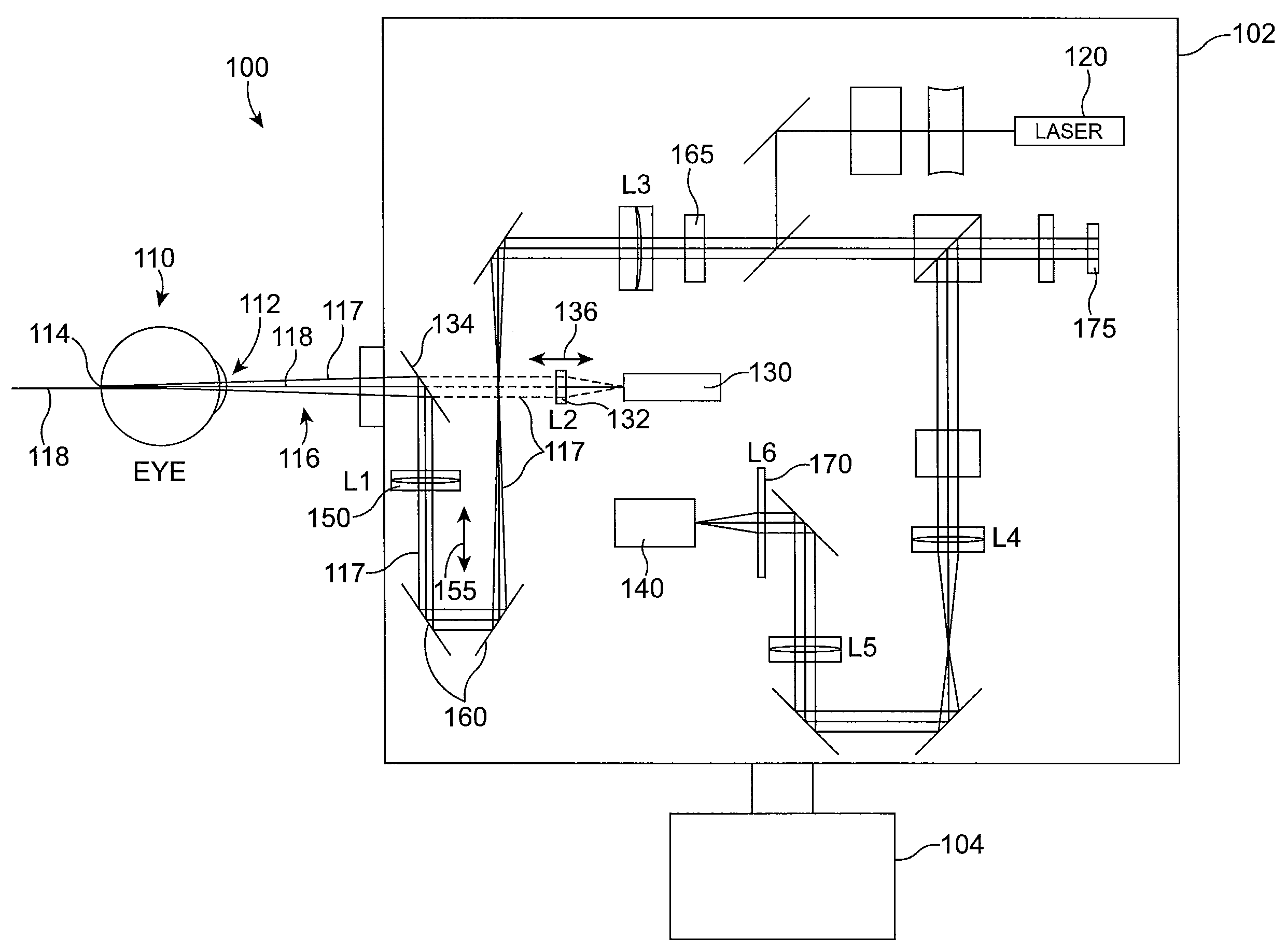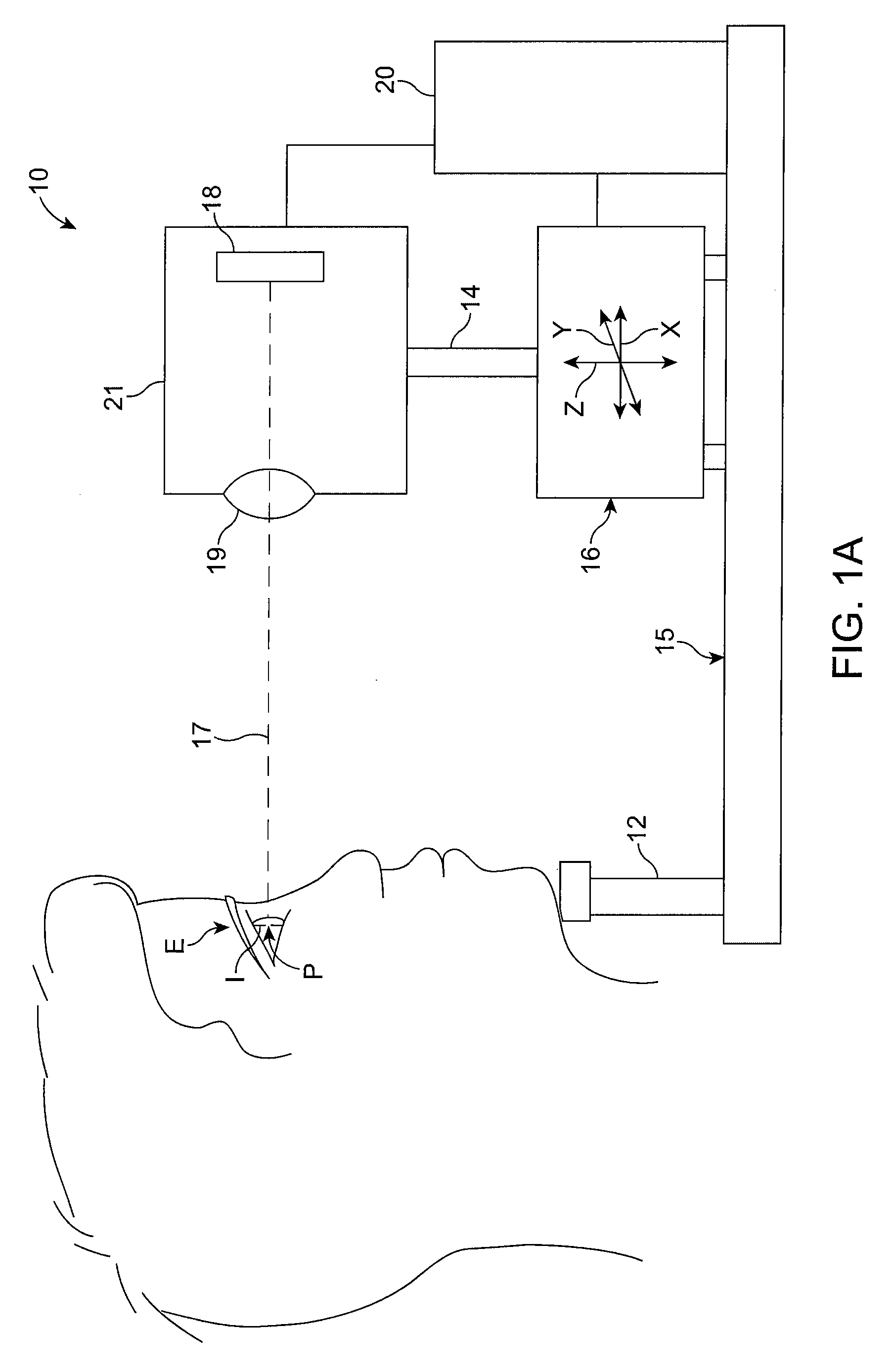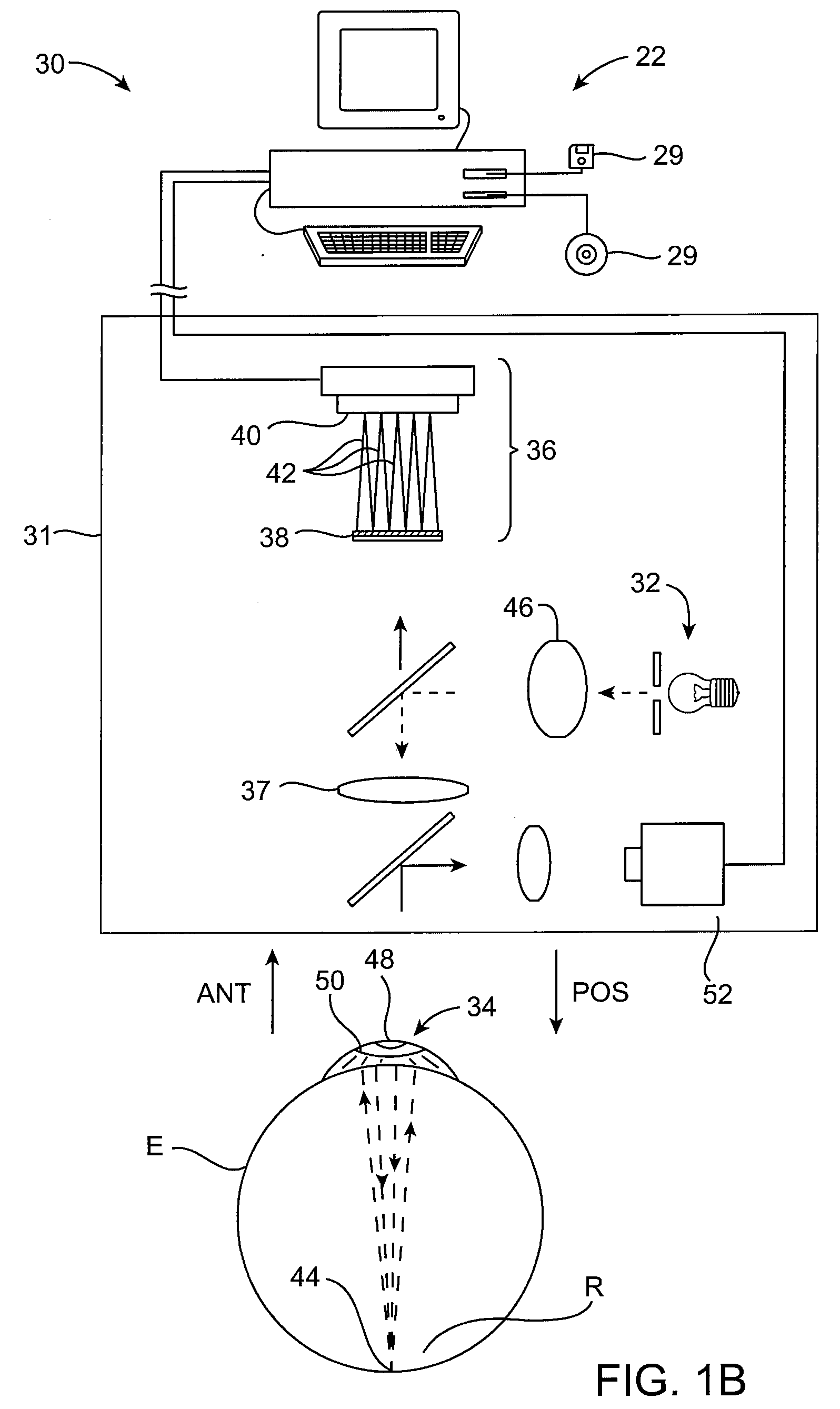Auto-Alignment and Auto-Focus System and Method
a technology of autofocus and alignment, applied in the field of autoalignment and autofocus system and method, can solve problems such as difficulty in alignment, achieve the effects of improving patient alignment, enhancing speed, ease, safety and efficacy, and increasing or maximizing gradients
- Summary
- Abstract
- Description
- Claims
- Application Information
AI Technical Summary
Benefits of technology
Problems solved by technology
Method used
Image
Examples
Embodiment Construction
[0037]The present invention relates generally to devices, systems, and methods for supporting and positioning patients and / or for analyzing ocular images. Embodiments of the present invention provide an improved patient alignment between a support structure, such as a chin rest, chair, bed, or table, and a diagnostic instrument, such as a wavefront measurement device, in which the instrument can be moved into alignment with the patient. Other embodiments provide mechanisms for positioning the head and body of a patient and stabilizing the patient support, providing improved patient stability during surgery. Although specific reference is made to images of ocular tissue structures comprising an iris and a pupil of the eye, embodiments of the invention may used to image and focus on other ocular tissue structures, for example the limbus of the eye. Embodiments of the present invention may be particularly useful for enhancing the speed, ease, safety, and efficacy of diagnostic eye meas...
PUM
 Login to View More
Login to View More Abstract
Description
Claims
Application Information
 Login to View More
Login to View More - R&D
- Intellectual Property
- Life Sciences
- Materials
- Tech Scout
- Unparalleled Data Quality
- Higher Quality Content
- 60% Fewer Hallucinations
Browse by: Latest US Patents, China's latest patents, Technical Efficacy Thesaurus, Application Domain, Technology Topic, Popular Technical Reports.
© 2025 PatSnap. All rights reserved.Legal|Privacy policy|Modern Slavery Act Transparency Statement|Sitemap|About US| Contact US: help@patsnap.com



